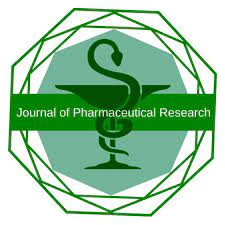


Journal of Pharmaceutical Research
Year: 2025, Volume: 24, Issue: 2, Pages: 124-128
Original Article
Shreyansh Jain1, Alka Bansal2,∗, Susheel Kumar3, Rajveer Singh Rathore4, Madhav Agrawal5
1MBBS Student, RUHS-CMS, Jaipur, Rajasthan, India
2Senior Professor, MD, Department of Pharmacology, RUHS-CMS, Jaipur, Rajasthan, India
3Assistant Professor, PhD, Department of Pharmacology, RUHS-CMS, Jaipur, Rajasthan, India
4Senior Demonstrator, MSc., Department of Pharmacology, RUHS-CMS, Jaipur, Rajasthan, India
5B Tech Student, Department of Chemical Engineering, IIT Bombay, Rajasthan, India
*Corresponding Author
Email: [email protected]
Global incidence of hypertension, obesity, and diabetes mellitus has been rising over years due to changed lifestyle and aging population. Recognizing gender as a biological variable is essential for deepening our understanding of disease mechanisms and their broader societal impact. To explore gender-specific variations in the correlations among hypertension, obesity, and diabetes mellitus. This study, conducted in January 2025, utilized secondary data from India’s fifth National Family Health Survey (NFHS-5), carried out in collaboration with Demographic and Health Surveys (DHS). NFHS-5 collected data from 636,699 systematically selected households, covering 724,115 women and 101,839 men. Key variables analyzed included blood pressure, random blood glucose and body mass index alongside demographic data. The prevalence of diabetes mellitus (p = 0.022) and hypertension (p = 0.002) was significantly higher among males, and obesity was higher in females (p = 0.001). In women, a moderate positive correlation was noted between diabetes and obesity (r = 0.641, p < 0.001), obesity and hypertension (r = 0.533, p = 0.001) and hypertension and diabetes (r = 0.487, p = 0.002). Among men, while significant correlations were found between diabetes and obesity and between hypertension and obesity, association between hypertension and diabetes was not statistically significant (p > 0.05). Gender differences are evident in prevalence and in the interrelationship between diabetes, hypertension, and obesity. Notably, correlation between hypertension and diabetes mellitus was not significant in male subgroup, emphasizing the importance of gender- specific analyses in public health research.
Keywords: Hypertension, Obesity, Diabetes mellitus, Gender differences, Correlation between non-communicable diseases
© 2025 Published by Krupanidhi College of Pharmacy. This is an open-access article under the CC BY-NC-ND license (https://creativecommons.org/licenses/by-nc-nd/4.0/)
Subscribe now for latest articles and news.